JS构建多端应用
一,需求与介绍
1.1,介绍
1,Taro 是一套遵循 React 语法规范的 多端开发 解决方案。现如今市面上端的形态多种多样,Web、React-Native、微信小程序等各种端大行其道,当业务要求同时在不同的端都要求有所表现的时候,针对不同的端去编写多套代码的成本显然非常高,这时候只编写一套代码就能够适配到多端的能力就显得极为需要。
使用 Taro,我们可以只书写一套代码,再通过 Taro 的编译工具,将源代码分别编译出可以在不同端(微信/百度/支付宝/字节跳动小程序、H5、React-Native 等)运行的代码。
2,Taro UI 是一款基于 Taro 框架开发的多端 UI 组件库
1.2,需求
一套代码,多端使用,减少开发成本
二,搭建项目
第一步:全局安装Taro 开发工具 @tarojs/cli
1 npm/cnpm install -g @tarojs/cli
第二步:创建项目
1 taro init YingQi
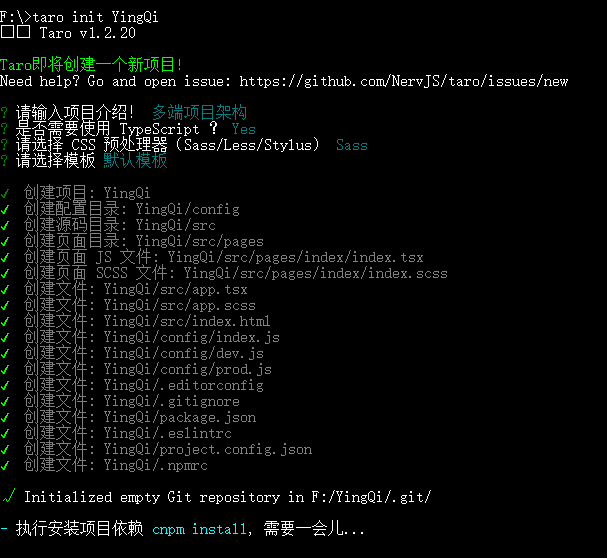
在创建完项目之后,Taro 会默认开始安装项目所需要的依赖,安装使用的工具按照 yarn>cnpm>npm 顺序进行检测。如果安装失败,可以使用如下命令安装
1 npm/cnpm install
第三步:运行项目
以运行H5为例,输入如下命令
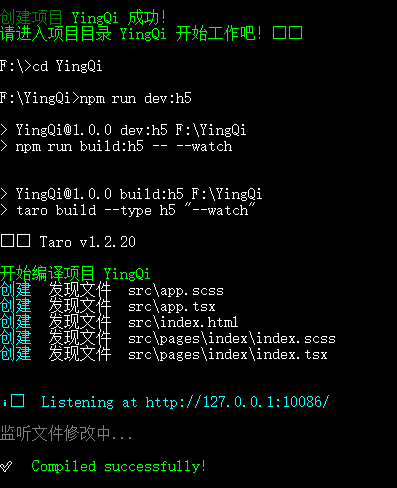
如果看到如下界面,表示运行成功
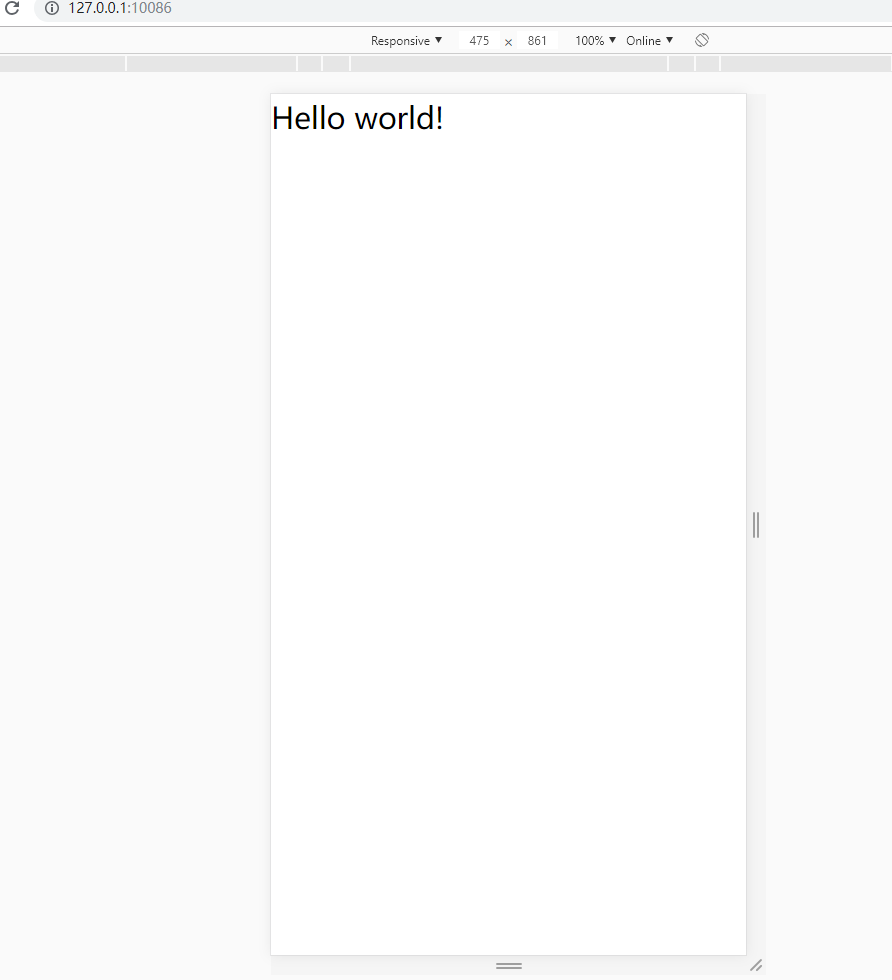
1.H5
H5预览项目
1 # npm script 2 $ npm run dev:h5 3 # 仅限全局安装 4 $ taro build --type h5 --watch 5 # npx 用户也可以使用 6 $ npx taro build --type h5 --watch
H5打包项目
1 # npm script 2 $ npm run build:h5 3 # 仅限全局安装 4 $ taro build --type h5 5 # npx 用户也可以使用 6 $ npx taro build --type h5
2.微信小程序
微信小程序预览项目
1 # npm script 2 $ npm run dev:weapp 3 # 仅限全局安装 4 $ taro build --type weapp --watch 5 # npx 用户也可以使用 6 $ npx taro build --type weapp --watch
微信小程序打包项目
1 # npm script 2 $ npm run build:weapp 3 # 仅限全局安装 4 $ taro build --type weapp 5 # npx 用户也可以使用 6 $ npx taro build --type weapp
注意:去掉 --watch 将不会监听文件修改,并会对代码进行压缩打包
其他端的预览/打包项目与H5的类似,只需把H5替换为其他的即可,如下:
- 百度只能小程序:swan
- 支付宝小程序:alipay
- React-Native:rn
- 头条/字节跳动小程序:tt
三,配置项目架构
3.1,配置dva
第一步:安装所需的依赖
1 npm/cnpm install --save dva-loading dva-core redux-logger
第二步:配置dva入口
1 import Taro from '@tarojs/taro'; 2 import { create } from 'dva-core'; 3 // import { createLogger } from 'redux-logger'; 4 import createLoading from 'dva-loading'; 5 6 let app; 7 let store; 8 let dispatch; 9 10 function createApp(opt) { 11 // redux日志 12 // opt.onAction = [createLogger()]; 13 app = create(opt); 14 app.use(createLoading({})); 15 16 // 适配支付宝小程序 17 if (Taro.getEnv() === Taro.ENV_TYPE.ALIPAY) { 18 global = {}; 19 } 20 21 //注册models 22 if (!global.registered) opt.models.forEach(model => app.model(model)); 23 global.registered = true; 24 app.start();//启动 25 26 store = app._store; 27 app.getStore = () => store; 28 29 dispatch = store.dispatch; 30 31 app.dispatch = dispatch; 32 return app; 33 } 34 35 export default { 36 createApp, 37 getDispatch() { 38 return app.dispatch; 39 }, 40 };
第三步:配置models文件-home
1 import {STATUSSUCCESS} from '../utils/const'; 2 import { 3 Home as namespace, 4 } from '../utils/namespace'; 5 import { 6 getSingleDataById, 7 } from '../services/home'; 8 9 export default { 10 namespace: namespace,//'home', 11 state: { 12 singleId:'', 13 tableName:'', 14 }, 15 effects: { 16 *getSingleData(_, { call, put,select }) { 17 const { singleId, tableName } = yield select(state => state[namespace]); 18 console.log('singleId===',singleId) 19 const { status, data } = yield call(getSingleDataById, { 20 singleId, 21 tableName, 22 }); 23 if (status ==STATUSSUCCESS) { 24 yield put({ 25 type: 'save', 26 payload: { 27 banner: data.banner, 28 brands: data.brands, 29 }, 30 }); 31 } 32 }, 33 }, 34 reducers: { 35 save(state, { payload }) { 36 return { ...state, ...payload }; 37 }, 38 }, 39 };
第四步:配置models的统一入口
1 import home from './home'; 2 3 export default [ home];
第五步:引入到项目入口文件
1 import dva from './entries'; 2 import models from './models';
第六步:在项目入口文件配置
1 ... 2 3 import { Provider } from '@tarojs/redux'; 4 5 ... 6 7 const dvaApp = dva.createApp({ 8 initialState: {}, 9 models: models, 10 }); 11 const store = dvaApp.getStore(); 12 13 ... 14 15 render() { 16 return ( 17 <Provider store={store}> 18 ... 19 </Provider> 20 ); 21 } 22 23 ...
3.2,配置服务请求
第一步:配置请求方式与返回状态
1 export const GET = 'GET'; 2 export const POST = 'POST'; 3 export const PUT = 'PUT'; 4 export const PATCH = 'PATCH'; 5 export const DELETE = 'DELETE'; 6 export const UPDATE = 'UPDATE'; 7 8 export const STATUSSUCCESS = 1;//成功返回状态
第二步:配置请求基础地址与日志是否打印
1 import Taro from '@tarojs/taro'; 2 // 请求连接前缀 3 export const baseUrl = Taro.getEnv() === Taro.ENV_TYPE.WEB?'':'http://localhost:8880';//web端使用代理服务,小程序端使用服务前缀 4 5 // 开发环境输出日志信息 6 export const noConsole = (process.env.NODE_ENV === 'development');
第三步:封装request
1 import Taro from '@tarojs/taro'; 2 import {STATUSSUCCESS} from './const'; 3 import { baseUrl, noConsole } from '../config'; 4 5 function checkHttpStatus(response) { 6 7 if (!!noConsole) { 8 console.log('response===',response) 9 } 10 if (response.statusCode >= 200 && response.statusCode < 300) { 11 return response.data; 12 } 13 const error = new Error(response.statusText); 14 error.response = response; 15 error.code = response.status; 16 throw error; 17 } 18 19 function getResult(json) { 20 // const {dispatch} = store; 21 if (json.status ==STATUSSUCCESS) { 22 return json; 23 } 24 else { 25 const error = new Error(json.message || json.msg || '数据加载错误!'); 26 error.code = json.code; 27 error.data = json; 28 throw error; 29 } 30 } 31 32 export default (url = '', options = {},) => { 33 let data; 34 let contentType; 35 data = options.data; 36 delete options.data; 37 contentType = options.contentType; 38 delete options.contentType; 39 const opts = { 40 url: baseUrl + url, 41 method: 'POST', 42 ...options 43 }; 44 opts.header = { 45 ...opts.header, 46 }; 47 48 // 请求连接前缀 49 if (opts.method === 'GET') { 50 url = url.split('?'); 51 url = url[0] + '?' + QueryString.stringify(url[1] ? {...QueryString.parse(url[1]), ...data} : data); 52 opts.headers['Content-type'] = contentType ? contentType : 'application/x-www-form-urlencoded'; // 53 54 } else { 55 opts.header['Content-Type'] = contentType ? contentType : 'application/x-www-form-urlencoded'; // 56 opts.data = contentType === 'application/json' ? JSON.stringify(data) : serialize(data); 57 } 58 if (!!noConsole) { 59 console.log( 60 `${new Date().toLocaleString()}【 request ${url} 】DATA=${JSON.stringify( 61 data 62 )}` 63 ); 64 } 65 return Taro.request(opts) 66 .then(checkHttpStatus) 67 .then(getResult) 68 .catch(err => ({err})); 69 };
第四步:请求服务
1 import request from '../utils/request'; 2 import {PUT, POST} from '../utils/const'; 3 4 /* 5 ***获取单个登录数据*** 6 */ 7 export async function getSingleDataById(data) { 8 return request('/api/v1/yingqi/user/getSingleDataById', {data, method: PUT, contentType: 'application/json'}); 9 }
3.3,配置UI组件
第一步:安装UI组件taro-ui
1 npm/cnpm install taro-ui --save
第二步:配置需要额外编译的源码模块
由于引用 `node_modules` 的模块,默认不会编译,所以需要额外给 H5 配置 `esnextModules`,在 taro 项目的 `config/index.js` 中新增如下配置项:
1 h5: { 2 esnextModules: ['taro-ui'] 3 }
第三步:使用taro-ui
1 // page.js 2 import { AtButton } from 'taro-ui' 3 // 除了引入所需的组件,还需要手动引入组件样式 4 // app.js 5 import 'taro-ui/dist/style/index.scss' // 全局引入一次即可
1 <AtButton 2 onClick={this.handleChange.bind(this)}> 3 底部关闭幕帘 4 </AtButton>
3.4,配置iconfont图标
第一步:在iconfont上创建项目
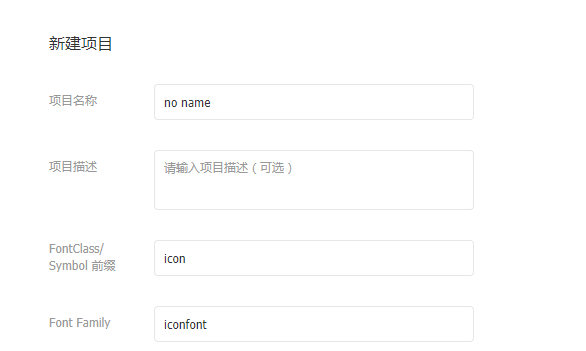
第二步:上传图标并生成代码
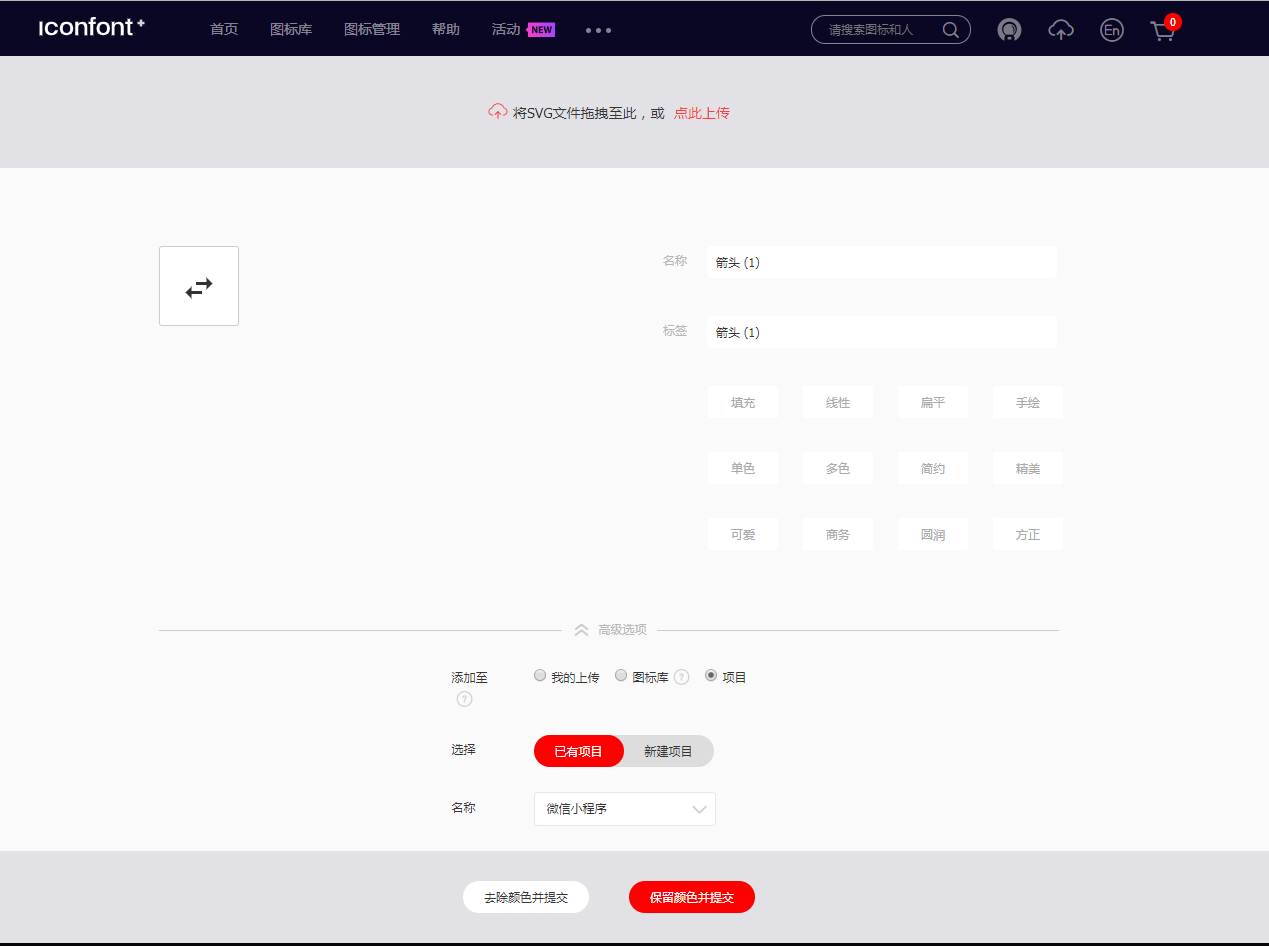
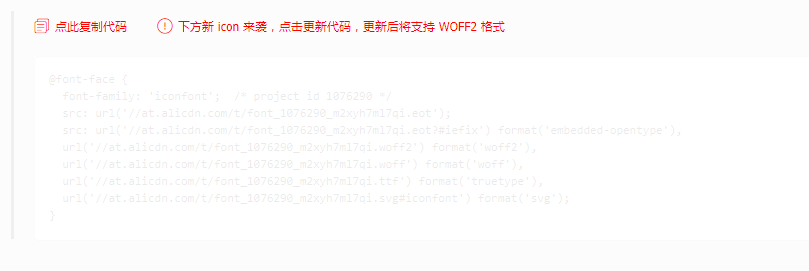

第三步:在项目中配置
1 @font-face { 2 font-family: 'iconfont'; /* project id 1076290 */ 3 src: url('http://at.alicdn.com/t/font_1076290_m2xyh7ml7qi.eot'); 4 src: url('http://at.alicdn.com/t/font_1076290_m2xyh7ml7qi.eot?#iefix') format('embedded-opentype'), 5 url('http://at.alicdn.com/t/font_1076290_m2xyh7ml7qi.woff2') format('woff2'), 6 url('http://at.alicdn.com/t/font_1076290_m2xyh7ml7qi.woff') format('woff'), 7 url('http://at.alicdn.com/t/font_1076290_m2xyh7ml7qi.ttf') format('truetype'), 8 url('http://at.alicdn.com/t/font_1076290_m2xyh7ml7qi.svg#iconfont') format('svg'); 9 } 10 11 .iconfont { 12 font-family: 'iconfont' !important; 13 font-size: 32px; 14 font-style: normal; 15 -webkit-font-smoothing: antialiased; 16 -moz-osx-font-smoothing: grayscale; 17 } 18 19 .icon-more:before { 20 content: 'e605'; 21 }
第四步:使用
1 <View className="iconfont icon-more arrow" />
效果如下:

四,常见问题
1,问题:使用inconfont图标时,web端没有显示图标
解决办法:在每一行//at.alicdn.com/t/font_1076290_m2xyh7ml7qi.eot前加“https:”
2,问题:Taro发起请求参数无法识别content-type类型
原因:由于常用的axios/fetch请求参数的头部是headers,而taro的是header,如果继续使用headers会引发content-type设置失效,变成默认的类型。
解决办法:headers->header
1 opts.header = { 2 ...opts.header, 3 };